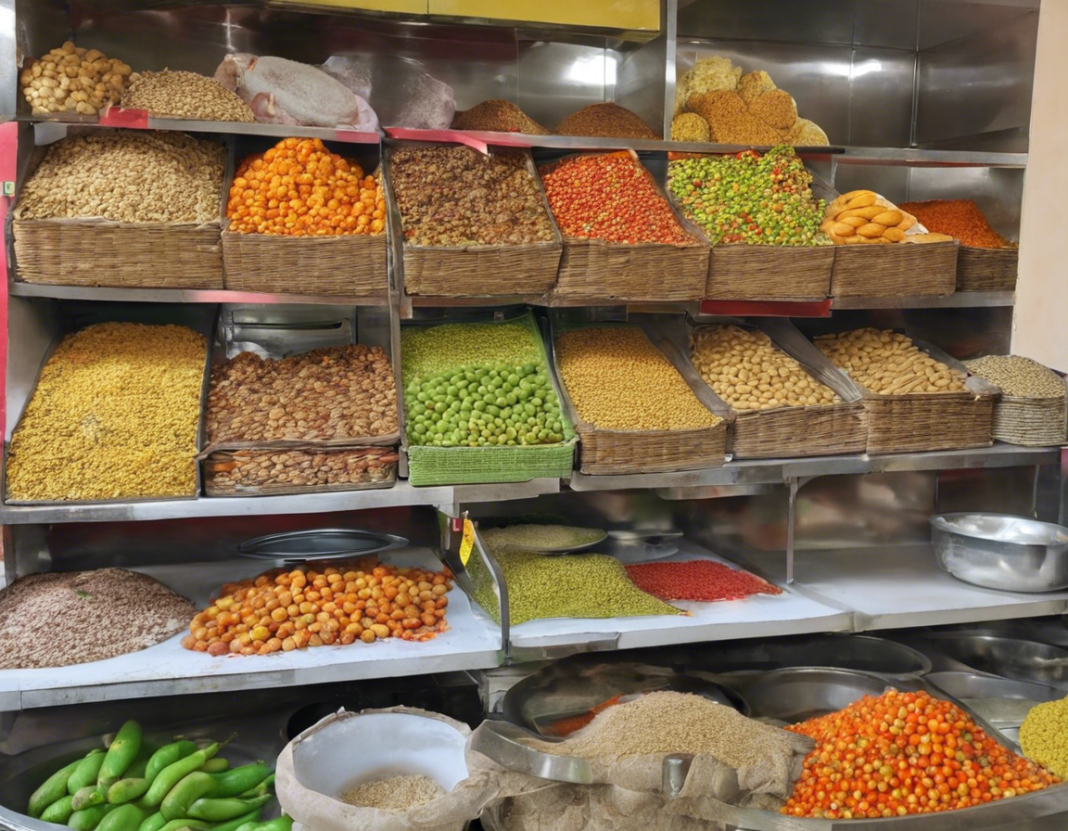Introduction
Rajasthan, the land of kings, is not only famous for its rich history and vibrant culture but also for its flavorful and indulgent cuisine. Comprising of a wide array of spicy and aromatic dishes, Rajasthan’s culinary traditions are deeply rooted in its history and geography. In this article, we will take you on a culinary journey through the food department of Rajasthan, exploring its unique dishes, traditional cooking methods, and the influence of the desert landscape on its cuisine.
The Essence of Rajasthan Cuisine
Rajasthani cuisine is a delightful blend of tangy, spicy, and sweet flavors that leave a lasting impression on your taste buds. The prominent use of spices like red chili, turmeric, coriander, and asafoetida gives the dishes their distinctive taste and aroma. The state’s predominantly arid climate has also played a significant role in shaping the culinary traditions of Rajasthan, leading to the development of long-lasting and energy-rich dishes that are well-suited to the harsh desert environment.
Rajasthani Specialties
-
Dal Baati Churma: This iconic Rajasthani dish consists of baked balls of wheat flour (baati) served with a spicy mix of lentils (dal) and a sweet crumbled wheat mixture (churma). It is often accompanied by ghee and is a must-try for anyone looking to experience the true flavors of Rajasthan.
-
Laal Maas: Translating to “red meat” in Hindi, Laal Maas is a fiery meat curry made with mutton, yogurt, and a blend of spices like red chili powder, garlic, and cloves. It is a staple dish in the royal kitchens of Rajasthan and is best enjoyed with bajra roti or rice.
-
Gatte ki Sabzi: This vegetarian delight features gram flour dumplings cooked in a spicy yogurt-based gravy. The dumplings are infused with flavors of cumin, coriander, and mustard seeds and are a popular choice for both everyday meals and festive occasions.
-
Ker Sangri: A traditional Rajasthani dish made from ker berries and sangri beans, this tangy and spicy preparation is a testament to the state’s ability to turn even the most austere ingredients into a culinary delight. It is often enjoyed with bajra roti or plain rice.
The Influence of Rajasthani Culture
Rajasthan’s rich cultural heritage is deeply intertwined with its culinary traditions. From the vibrant colors of traditional attire to the rhythmic beats of folk music, every aspect of Rajasthani culture finds expression in its cuisine. The art of hospitality, a key pillar of Rajasthani culture, is reflected in the elaborate feasts prepared for guests on special occasions like weddings and festivals.
Traditional Cooking Methods
Rajasthani cuisine is known for its use of traditional cooking methods that have been passed down through generations. One such technique is dum cooking, where ingredients are slow-cooked in a sealed vessel to trap the flavors and aromas. Another popular method is grilling over open flames, which imparts a smoky flavor to dishes like kebabs and tandoori meats.
The Sweet Side of Rajasthan
No culinary journey through Rajasthan is complete without indulging in its array of decadent sweets. From the melt-in-your-mouth goodness of Ghevar to the crunchy perfection of Balushahi, Rajasthan offers a delightful range of desserts that cater to every sweet tooth. Malpua, Moong Dal Halwa, and Mawa Kachori are some other popular sweets that showcase the state’s expertise in the art of sweet-making.
Exploring Street Food in Rajasthan
Rajasthan’s bustling streets are a treasure trove of flavors and aromas, with an array of street food options that cater to every palate. From the spicy goodness of Pyaz Kachori to the crispy delights of Mirchi Bada, street food in Rajasthan is a culinary adventure waiting to be experienced. The ubiquitous lassi and gol gappas are also popular choices among locals and tourists alike.
Rajasthani Thalis: A Feast for the Senses
Rajasthani thalis are a culinary marvel, offering a symphony of flavors and textures on a single platter. A typical thali includes dishes like dal, bati, churma, kadhi, gatte ki sabzi, and papad, accompanied by rotis or rice. The balance of spicy, tangy, and sweet flavors in a Rajasthani thali is designed to provide a holistic dining experience that satisfies both the palate and the soul.
Food Festivals in Rajasthan
Rajasthan is home to a vibrant food culture that finds expression in its numerous food festivals held throughout the year. Events like the Jaipur Literature Festival and the Pushkar Fair feature a diverse range of culinary experiences, from cooking workshops to food tastings. These festivals provide a platform for local chefs and home cooks to showcase their culinary skills and promote the rich heritage of Rajasthani cuisine.
Conclusion
In conclusion, Rajasthan’s food department is a reflection of its rich cultural heritage, vibrant traditions, and deep connection to its arid landscape. From savory dishes like Dal Baati Churma and Laal Maas to sweet indulgences like Ghevar and Malpua, Rajasthan offers a culinary experience like no other. Whether you’re exploring the bustling streets of Jaipur or dining in a traditional Rajasthani home, the flavors of Rajasthan are sure to leave an indelible mark on your taste buds.
Frequently Asked Questions (FAQs)
1. What is the significance of ghee in Rajasthani cuisine?
Ghee plays a crucial role in Rajasthani cuisine, adding richness and flavor to dishes. It is often used for cooking, drizzling over dishes, and even as a condiment.
2. How spicy are Rajasthani dishes?
Rajasthani dishes are known for their bold and spicy flavors. The level of spiciness can vary depending on the dish and the region where it is prepared.
3. What are some essential spices used in Rajasthani cooking?
Key spices used in Rajasthani cooking include red chili, turmeric, coriander, cumin, and asafoetida. These spices lend a distinctive flavor and aroma to the dishes.
4. Can vegetarians enjoy Rajasthani cuisine?
Yes, Rajasthan offers a wide range of vegetarian dishes that are flavorful and satisfying. Popular vegetarian dishes include Gatte ki Sabzi, Ker Sangri, and Dal Baati Churma.
5. What are some traditional Rajasthani desserts?
Traditional Rajasthani desserts include Ghevar, Malpua, Balushahi, Moong Dal Halwa, and Mawa Kachori. These sweets are often enjoyed during festivals and special occasions.
6. Is street food safe to eat in Rajasthan?
While street food in Rajasthan is delicious, it’s essential to exercise caution and choose clean and hygienic stalls. Opt for freshly prepared dishes and avoid eating street food from unhygienic vendors.
7. How can I replicate Rajasthani flavors at home?
To replicate Rajasthani flavors at home, stock up on essential spices like red chili powder, turmeric, cumin, and coriander. Experiment with traditional Rajasthani recipes and try to incorporate authentic cooking techniques for an authentic taste.
8. What makes Rajasthani thalis unique?
Rajasthani thalis are unique for their variety of dishes, balance of flavors, and the wholesome dining experience they provide. A typical thali showcases a mix of savory, spicy, and sweet flavors that cater to different taste preferences.
9. Are there any regional variations in Rajasthani cuisine?
Yes, there are regional variations in Rajasthani cuisine based on factors like geography, climate, and local culinary traditions. Different regions in Rajasthan have their own specialties and cooking styles that contribute to the diversity of Rajasthani cuisine.
10. Can I find Rajasthani food outside of Rajasthan?
Yes, Rajasthani cuisine has gained popularity across India and internationally, allowing food enthusiasts to enjoy authentic Rajasthani dishes in various restaurants and food stalls. Look for restaurants specializing in Rajasthani cuisine or attend food festivals that feature Rajasthani delicacies.




